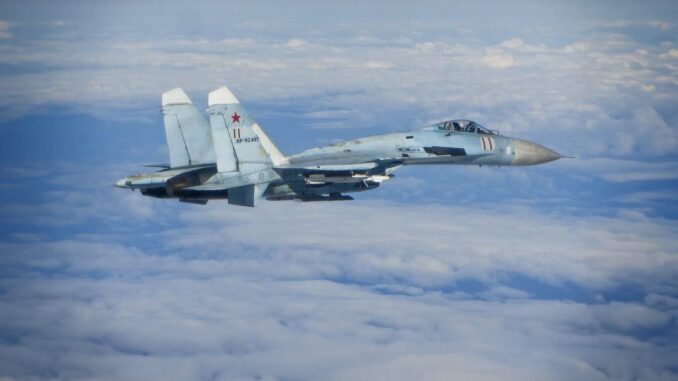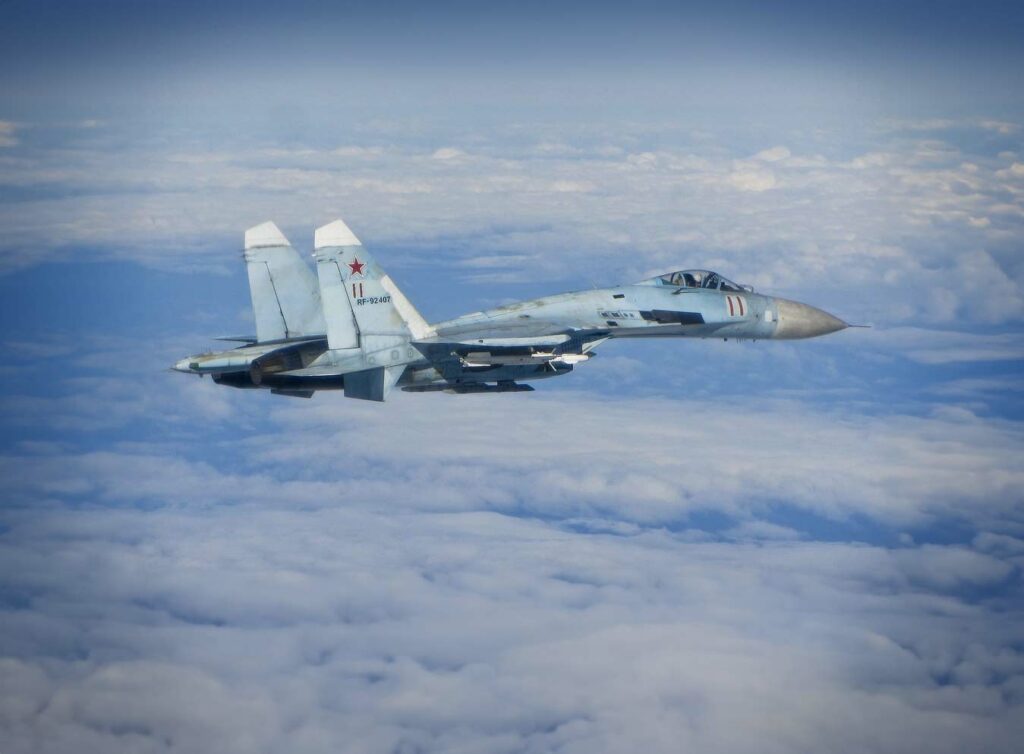
Russia recently intercepted two American B-1B bombers and a Global Hawk drone near its Baltic and Black Sea borders, heightening air tensions between the two powers. These increasingly frequent incidents raise questions about regional security and stability in a context of growing geopolitical rivalries.
Background to the incident
The military maneuvers involved
The Russian Ministry of Defense reported the dispatch of fighter jets to intercept two US B-1B strategic bombers and a Global Hawk drone approaching Russia’s northern and southern borders. One Su-37 fighter jet was mobilized in each case to deal with the American aircraft, which then moved away from the Russian borders.
Location of interceptions
The US B-1B bombers were spotted near the Baltic Sea, while the Global Hawk drone approached the Black Sea. These areas are strategically important, and are often the scene of military maneuvers by both powers.
Analysis of escalating interception incidents
Increasing frequency of incidents
In recent weeks, such incidents have multiplied, reflecting growing tension between Russia and the United States. These interceptions are not isolated cases, but part of a series of air confrontations between the military forces of the two countries.
Strategic significance
These intercepts are symptomatic of the two countries’ offensive and defensive military postures. They reflect a desire to demonstrate strength and test the responsiveness of the adversary, against a backdrop of increasingly assertive geopolitical and military rivalries.

Geopolitical and security consequences
Risk of military escalation
The increase in interceptions and approaches close to borders may lead to misunderstandings or accidental incidents, increasing the risk of a direct military confrontation between the USA and Russia.
Impact on regional security
These military activities heighten tensions in the Baltic and Black Sea regions, strategic zones where the military presence of the USA, Russia and NATO is significant.
Diplomacy and international relations
These air incidents are exacerbating diplomatic tensions and could hamper efforts at dialogue and cooperation in key areas such as international security, arms control and regional conflict resolution.
Future prospects
The need for communication channels
To avoid a dangerous escalation, it is crucial that the USA and Russia maintain open and effective channels of communication, particularly for the management of air incidents.
Surveillance and intelligence
Surveillance and intelligence will play a key role in understanding the intentions and military capabilities of each side, enabling such incidents to be better anticipated and managed.
Role of the international community
The international community, including the UN and NATO, could play a mediating role in easing tensions and promoting confidence-building measures between the USA and Russia.
The recent interception of US bombers and a drone near Russia’s borders by Su-37 fighters underscores a rise in air tensions between the US and Russia. These incidents, set against a backdrop of heightened strategic rivalry, require careful attention to avoid escalation into open conflict. Careful management of these interactions, accompanied by active diplomacy and open communication, is essential to maintain regional stability and reduce the risk of unforeseen incidents with potentially serious consequences for international peace and security.
War Wings Daily is an independant magazine.